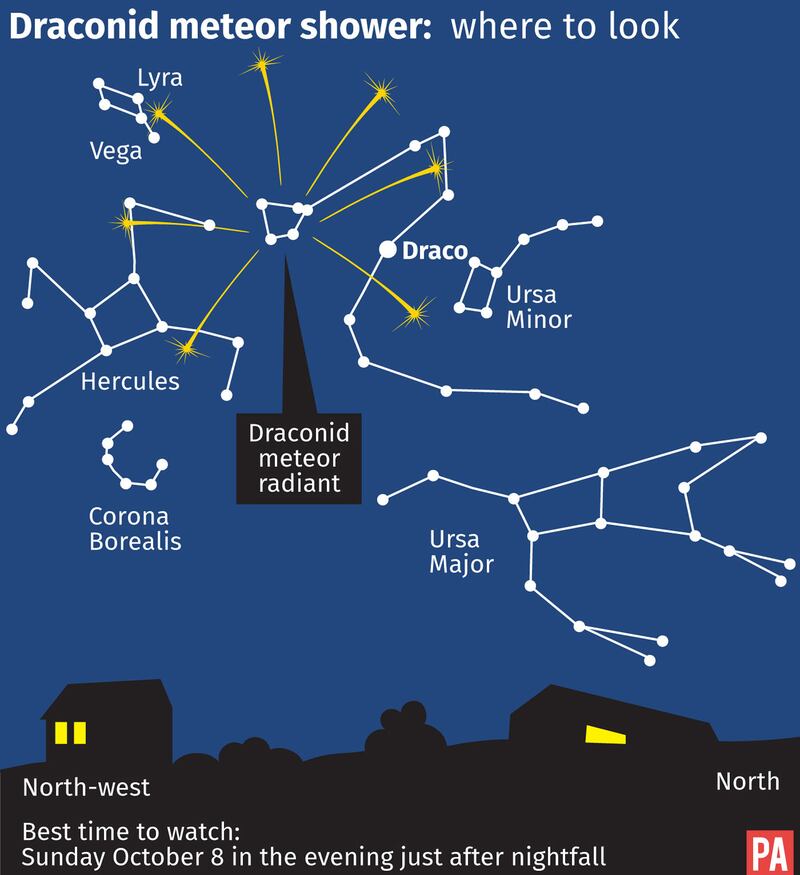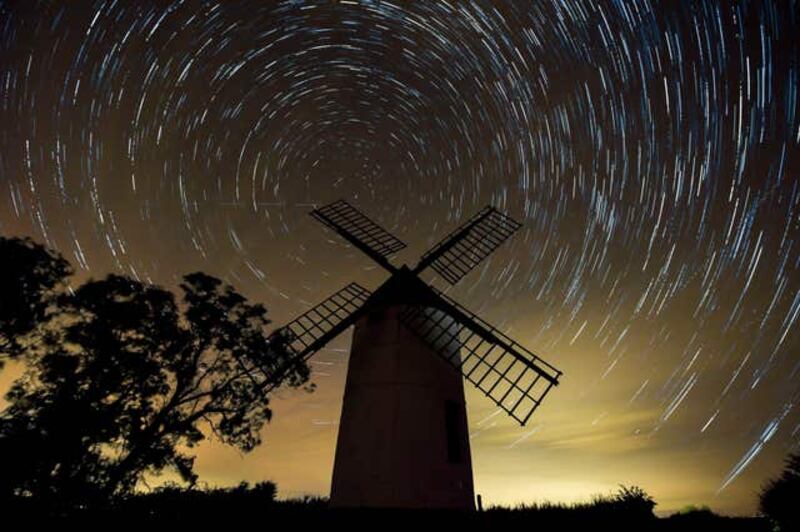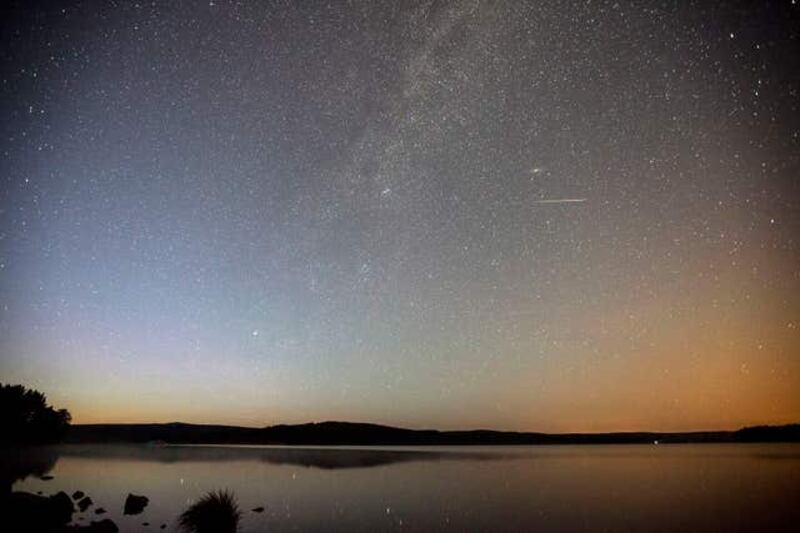If you missed the Perseid meteor shower two months ago and are still feeling a bit disappointed about it, then here’s some good news to cheer you up.
The Draconid meteor shower is set to appear in skies across the UK and illuminate the night sky this weekend – when the celestial phenomenon is expected to peak.
Here’s everything you need to know:
What is it?

The Draconid meteor shower, also known as the Giacobinids, takes place every year and is one of the two meteor showers to light up our skies in October.
According to Nasa, the shower is caused “when Earth collides with bits of debris shed by periodic comet 21P/Giacobini-Zinner”, burning up in streaking flashes of light to illuminate the skies.
The celestial phenomenon gets its name from the Draco the Dragon constellation, which lies in the far northern part of the sky, and the comet that is responsible for it.
A second meteor shower, the Orionids, will also take place later this month, peaking on October 21.
When will you be able to see it?
On October 7 and 8, there is a reasonable chance of Earth passing through a swarm of debris left in the comet’s wake, leading to the meteors.
The meteor shower is most likely to be visible in the direction of the constellation of Draco.
The best time to watch would be on Sunday at nightfall – unlike many showers which are better viewed in the early hours.
Affelia Wibisono, an astronomer at the Royal Observatory, said: “This year the Draconids will peak on the 8th October and the best times to see them are in the early evening on that day, but it is visible all through the night, weather depending of course.”
What are the best places to catch the shower?

The Draconids will be visible in Northern America, Europe and Asia. The further north you are, the better chances you’ll have of seeing the meteor shower.
Barring cloudy skies and light pollution, you should able to view it from pretty much anywhere in the Northern Hemisphere.
What will you see?

Unfortunately, this shower can be a hit or miss – sometimes producing spectacular views, while other times you can see only a few meteors per hour.
Visibility will also depend on how much moonlight there is in the night sky.
Wibisono explains: “It might be difficult though because there will be a waning gibbous Moon up that night which means that the moonlight will prevent people from seeing the fainter meteors.
“The best thing to do is to turn your back to the Moon to minimise the amount of light pollution from the Moon. And of course get away from the city lights.”
Do you need any astronomy equipment?
You should be able to see the Draconids with your naked eye – it gives you a wider view of the sky than using binoculars or a telescope.
Get as far away from artificial light as you can and allow at least 45 minutes for your eyes to adjust to the dark.










